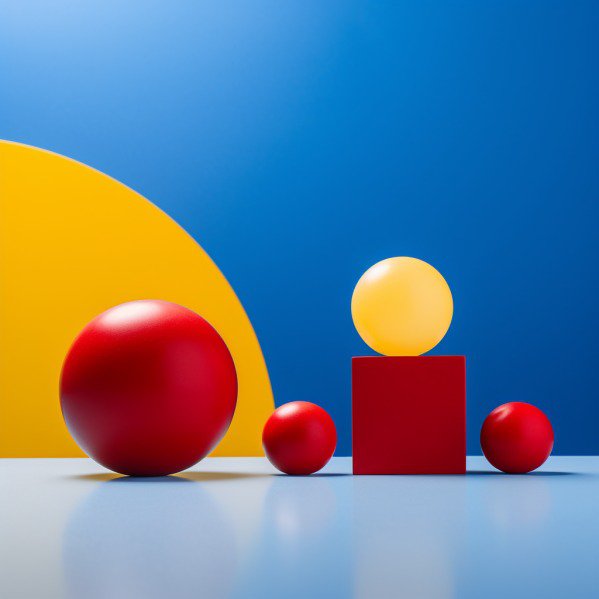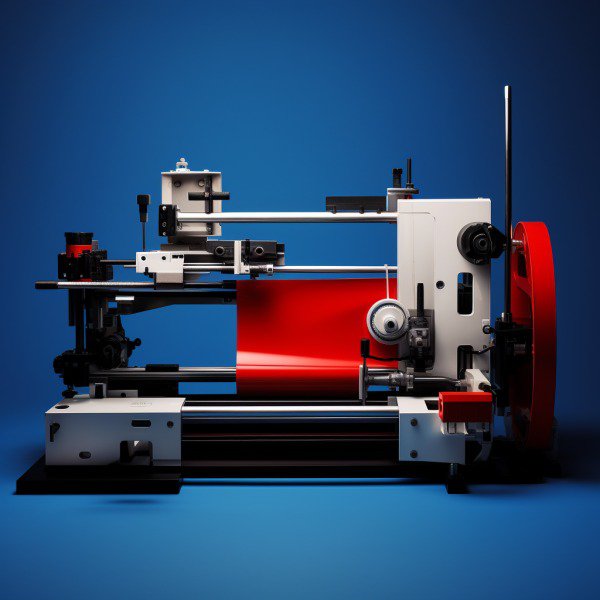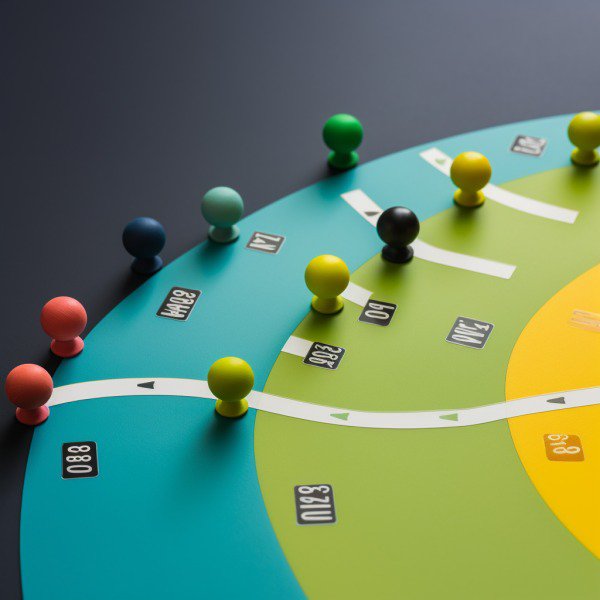Table of Contents:
- Understanding High Fidelity Wireframes
- The Design Process Involving High Fidelity Wireframes
- Techniques for Creating Effective High Fidelity Wireframes
- Comparing Different Types of Wireframing Approaches
- Collaborative Aspects of High Fidelity Wireframe Design
- Real-world Applications of High Fidelity Wireframes
- Tips for Optimizing Your High Fidelity Wireframe Designs
- FAQs in Relation to High-Fidelity Wireframes
- Conclusion
Ever stared at a blueprint and felt the rush of envisioning the final masterpiece? That’s what working with high fidelity feels like for designers. It’s like holding a magnifying glass to your imagination, scrutinizing every pixel before it finds its home in your design.
You see, high-fidelity (hi-fi) wireframes are more than just sketches on digital paper. They’re finely detailed roadmaps that lead us towards an engaging user experience. A good hi-fi wireframe is like having GPS during a cross-country trip; you know exactly where you’re going, and can even visualize some key landmarks along the way.
Join me on this adventure as we explore how these detailed plans shape our digital world, one screen at a time. We’re talking everything from snappy mobile apps to user-friendly websites. Let’s dig into why they’re such key players in top-notch design.
Understanding High Fidelity Wireframes
The term ‘high fidelity wireframes’ may seem intimidating, but it’s quite simple. They are visual representations of a future product’s design, more detailed than their low-fidelity counterparts. They give a clearer picture of the final product and help teams visualize user interactions.
High fidelity wireframes typically include UI elements like buttons, images, and input fields in detail. This level of specificity lets designers understand the general layout better and fix any potential human error early on.
Detailed wireframes also act as an excellent communication tool for your team members during the development process. When you create high-fidelity wireframe designs with care, they can even serve as blueprints for developers to follow when building out features or pages.

The Role of High Fidelity Wireframes in Design
A good idea is just that without execution; this is where high fidelity wireframes step into the spotlight. By sketching UI components accurately down to pixel-level precision, we’re able to reduce ambiguity around what needs to be built next – making everyone’s life easier.
Wireframing tools, such as Justinmind or Sketch, make creating these mock-ups faster and more accurate by providing libraries filled with pre-made components.
- Key Stat 1: Using hi-fi (short for high fidelity) prototypes can cut down back-and-forth feedback cycles by up to 50%.
- Key Stat 2: Teams who use hi-fi prototypes before starting development save about $30k per project.
- ‘80%’ of UX designers consider wireframing as an essential part of the design process.
- Key Stat 4: High fidelity wireframes reduce product development time by ‘33%’.
The statistics above are a testament to the value that high-fidelity prototypes bring into your product’s design process. By spending extra time creating these detailed designs, you save multiple rounds of revisions and get closer to your final product quicker.
We’re incorporating this practice into our regular workflow.
Key Thought:
High fidelity wireframes are a game-changer in product design. They give teams an accurate, detailed view of the future product and can cut feedback cycles by up to 50%. Using them could save you about $30k per project. So, start sketching those pixel-perfect mock-ups – your team (and budget) will thank you.
The Design Process Involving High Fidelity Wireframes
When it comes to product design, incorporating high fidelity wireframes is no small task. But why? Because these detailed visual representations play a pivotal role in communicating design ideas and guiding the development process.
High-fidelity wireframes, unlike their low-fidelity counterparts, give a near-accurate depiction of the final product’s look and feel. They are typically created with specific UI elements that mimic user interactions – think buttons you can click on or forms you can fill out.
Iterative Design and High Fidelity Wireframes
In an iterative design process, high fidelity wireframes come into play after initial brainstorming sessions have taken place. The team members might start sketching UI designs based on basic architecture drawn from low-fidelity sketches or medium fidelity mockups.
This transition helps teams visualize future designs better by detailing each element’s position within the general layout – something that cannot be achieved using only low-fidelity versions.
An interesting stat: 6 out of 10 UX designers agree that creating such intricate models save time in later stages because they communicate clear expectations to developers before coding begins (Stat 7).
A key advantage here is minimizing human error during translation from conceptual model to code. Teams working with hi-fi prototypes often report fewer misunderstandings about functionality between designers and coders as compared to those who don’t use them.
“We need less back-and-forth since everyone understands what needs doing.”
– A lead designer at our firm talking about the benefits of using high fidelity wireframes.
Designing these wireframes may require a bit more time initially. It’s like taking an extra moment to aim carefully – you’ll be more likely to hit the mark right away.
In essence, by using high-fidelity models in iterative design processes, we can enhance user experience and product quality while also streamlining communication within our teams.
Key Thought:
Detailed high-fidelity wireframes are pivotal in team chats and product development. After the initial idea toss-around, they step in during the iterative design cycle to help us see upcoming designs more clearly. Sure, they need a bit of extra time at first but trust me, these complex blueprints can be real timesavers down the line by laying out crystal clear expectations for our coders ahead of time.

Techniques for Creating Effective High Fidelity Wireframes
The journey to creating a high-fidelity wireframe starts with an understanding of your product’s design and user interactions. So, what are some effective techniques? Let’s dive in.
Prioritize User Experience (UX)
In the realm of UX design, fidelity wireframes reign supreme because they depict a detailed visual representation of the final product. They let teams visualize potential human errors and fix them before development commences.
To create these hi-fi wireframes, start by sketching UI elements based on your basic architecture. But remember, while you aim for detail, simplicity is key too.
Leverage Wireframe Tools
Digital tools can help you make sure that your high fidelity wireframes align perfectly with the intended user experience. For instance, consider using Justinmind, a great tool to create realistic designs.
Iterative Design Process
This process involves multiple rounds of revisions to improve the quality of your hi-fi wireframes progressively. Remember this golden rule: don’t be afraid to go back if something doesn’t work right.
Maintain Consistent Communication With Your Team Members
An excellent way to communicate design ideas is through regular check-ins within your team members during each stage from low-fidelity all through medium fidelity and up till high-fidelity stages.
Time Management
Surely we understand that more time equals higher-quality outcomes, right?
Nope. It’s quite possible to deliver superior results without spending extra hours hovering over every single pixel. This brings us neatly onto the final point…
Don’t Get Lost in Details
A common mistake is to spend extra time on details that don’t contribute much to user experience or product functionality. Stay focused. Your aim should be a balance between creativity and usability.
To wrap it up, wireframes of high fidelity are essential to understand the end product’s look. They give you key insights into how the final product will appear.
Key Thought:
Creating effective high fidelity wireframes starts with understanding your product’s design and user interactions. Prioritize UX, leverage digital tools like Justinmind for realistic designs, embrace an iterative process, maintain regular communication with your team, manage time effectively without obsessing over details. Remember the balance between creativity and usability is crucial.
Comparing Different Types of Wireframing Approaches
Entering the realm of product design, you’re likely to encounter wireframes right off the bat. Wireframes come in varying levels of fidelity, each with its own advantages and disadvantages. From basic blueprints to more intricate designs, wireframes exist on a spectrum of low-fidelity to high-fidelity.
The Evolution from Low to High Fidelity Wireframes
In essence, low-fidelity wireframes serve as basic blueprints for web or app designs. They provide an outline – think skeleton – for user interface (UI) elements without getting caught up in aesthetics just yet. As we move towards medium fidelity wireframes, more details begin creeping in – but it’s only when we hit high fidelity territory that things start looking like a final product.
High fidelity wireframe creation is where creativity meets functionality; these highly detailed representations incorporate color schemes, typography choices and even micro-interactions such as button hovers. They let teams visualize their future design while providing an accurate depiction of user interactions before any code has been written.
A critical factor here is time investment: crafting high-quality hi-fi frames takes significantly longer than sketching out rougher drafts – so why bother? Well because they can help prevent costly mistakes further down the line by identifying potential human error early on.
- Key Stat 1: Teams using high-fidelity prototypes found serious usability problems 60% earlier than those using lower quality mock-ups (source)
- Key Stat 2: Detailed representation in hi-fi designs leads to a 25% decrease in development time, as the design process becomes clearer and revisions become fewer.
- Key Stat 3: A high-fidelity wireframe can reduce rework by up to 40%, saving both time and resources for the product team (source)
In short, if you’re looking to save some coin while avoiding pesky do-overs during your project’s lifecycle – consider investing extra time into creating realistic hi-fi wireframes. Remember: detailed now saves dismay later.
So what’s the big picture? Your wireframe quality should line up with your project’s needs.
Key Thought:
Immerse yourself in product design through wireframes. But, keep in mind – they’re not all the same. Low-fidelity sketches act as simple plans, while high-fidelity ones breathe life into creativity with vibrant color schemes and micro-interactions. Sure, they demand more time to craft, but spotting problems early can save you valuable resources later.
Collaborative Aspects of High Fidelity Wireframe Design
The creation of high fidelity wireframes is a crucial part in the design process. These detailed visual representations not only map out the general layout and user interactions but also pave the way for fruitful collaboration within design teams.
Eleken UX Design Agency, an expert in product development, highlights how hi-fi wireframes can help bridge gaps between designers and developers. They facilitate a shared understanding, ensuring all team members are on board with future design directions.
High-fidelity wireframes represent more than just basic architecture; they embody your final product’s design essence. With intricate details like specific UI elements or interaction cues included, these digital drafts give life to abstract ideas while allowing space for creative dialogue among team members.

Visualizing Ideas Through High-Fidelity Wireframes
In any web or app development process, getting everyone involved – from UX designers to stakeholders – to visualize what you’re aiming at isn’t always easy. That’s where high fidelity wireframe shines. It translates those sketchy ‘design language’ into something tangible that everyone can understand.
The practice saves time too. Detailed hi-fi wireframes require some extra effort upfront but significantly cut down revisions later by nipping potential human errors right in their bud during initial stages itself.
A Tool For Communication And Collaboration
Apart from being an essential part of product planning, high fidelity wireframing serves as a powerful communication tool within the entire project ecosystem — aiding both internal team dynamics and external client discussions alike.
An interactive prototype developed using tools such as Justinmind wireframe tool helps designers communicate their ideas more effectively. It allows everyone involved to experience the future product’s user interface and interactions, ensuring a common understanding before moving on to the final design.
High fidelity wireframes are not just static sketches but interactive dialogue starters – they facilitate open discussions, invite constructive feedback, and inspire creative problem-solving. So next time you’re planning your design project, remember: start with high-fidelity.
Key Thought:
High fidelity wireframes play a crucial role in the design process. They provide detailed visual maps that promote collaboration, helping teams visualize and agree on future designs. With specific UI elements included, these wireframes translate abstract ideas into tangible plans, saving time by reducing revisions. Beyond planning, they’re powerful communication tools fostering internal discussions and external client conversations alike.
Real-world Applications of High Fidelity Wireframes
In the bustling world of web design, high fidelity wireframes are like detailed blueprints. They provide a visual representation of future product designs, with a focus on user interactions and interface elements.
Let’s explore how high fidelity wireframes can be used in the real world. Let’s dive into some real-life applications.
Web Design Marvels
First up is our favorite playground – web design. High-fidelity wireframes created for websites can save extra time and reduce human error by mapping out every detail before coding begins. They give team members a clear idea about how each element should be positioned to ensure an optimal user experience.
A case study showcasing this application would be this project, where hi-fi wireframes helped streamline the development process and communicate design ideas effectively within the team.
User-centric Mobile App Design
Moving onto mobile app development, high fidelity wireframes serve as navigational guides. Here they help UX designers understand intricate details such as touch targets and gesture controls specific to handheld devices.
An interesting example is this sleek fitness app from Eleken UX Design Agency who utilized these wireframing techniques during their design project. This approach ensured seamless transitions between screens while keeping users engaged through intuitive navigation cues.
Detailed Product Designs
Last but not least, let’s talk product designs. These creations demand multiple iterations; thus requiring more detailed plans which are often achieved using high-fidelity wireframe examples.
- The Microsoft Office Suite serves as a brilliant demonstration here. Check out how they used hi-fi wireframes to design their interface.
- For the final product, teams visualize every detail, right down to font sizes and color schemes. It’s a key step in ensuring your product looks as good on-screen as it does on paper.
So, if you’re doodling up UI for web or mobile apps, high-quality wireframes can really change the game.
Key Thought:
High fidelity wireframes are like the detailed blueprints for web design, giving a visual sneak peek of what your product designs will look like while also honing in on how users interact with it. They’re real game-changers when you’re working on web design, mobile app development or complex product designs because they help smooth out processes and let you see things such as touch targets or font sizes before any coding starts. Essentially, they make sure that your final product really pops off the screen.
Tips for Optimizing Your High Fidelity Wireframe Designs
High fidelity wireframes are a key step in the design process. They give a visual representation of your product’s design, detailing user interactions and UI elements.
The question is: How can we create high-fidelity wireframes that balance creativity with usability? Let’s dive into some practical tips to optimize your hi-fi wireframe designs.
Create Realistic Scenarios
Sketch out possible situations where users would be using your product to get a better idea of the interaction. This includes considering all potential user paths and interface states. For example, what happens when an error occurs or if there’s no internet connection?
This approach helps designers understand the broader context of their work and anticipate possible challenges ahead. Plus, it saves you from future design headaches.
Detail Matters – But So Does Simplicity
Incorporating detailed elements like real content instead of placeholder text can make sure your team members visualize the final product more accurately. Wireframe tools like Justinmind let you add these details without much extra time.
However, remember not to overcomplicate things. A good idea would be using gray-scale colors primarily while keeping icons simple yet understandable – just enough detail but nothing distracting.
Leverage Iteration And Feedback
An iterative approach works best when creating high-fidelity wireframes because this method encourages continuous improvement based on feedback from stakeholders including UX designers, developers, etc.
This also makes sure any human errors get caught early on during the development process rather than later in production, which could lead to significant delays or rework.
Collaboration is Key
High-fidelity wireframes are a collaborative tool. They help communicate design ideas to team members, stakeholders, and clients. Using software that allows multiple designers to work on the same wireframe can streamline this process.
Alright, what’s the last move? Give your high-quality wireframes a run with actual users. This is top-notch for confirming your design choices and making sure your upcoming product offers a great user experience. Don’t forget, Microsoft Office suite has some cool tools to help you craft these interactive models.
Key Thought:
Creating high-quality wireframes is key to visualizing your product’s design. Start by sketching out lifelike user scenarios and think about all potential paths. Keep things simple yet detailed, using real content when it boosts clarity but avoid making the design too complex. Get into a rhythm of constant improvement through feedback in an iterative process. Work together with other teams for top-notch results and don’t forget, always test your work.
FAQs in Relation to High Fidelity Wireframes
What is the key difference between high and low fidelity wireframes?
The main split lies in detail level. High fidelity wireframes pack more specifics, colors, and images, while low-fidelity ones are basic sketches of the page layout.
What are high and low fidelity wireframes?
High fidelity wireframes resemble final designs with accurate content and visuals. Low-fidelity versions present a rough guide for the structure without design elements.
What is high fidelity in UI UX?
In UI UX, high fidelity means creating highly detailed interfaces that mirror real product experiences closely during testing phases.
Is Figma low fidelity or high fidelity?
Figma can be both – it’s versatile enough to craft simple outlines (low-fi) or intricate layouts with interactive components (high-fi).
Conclusion
Exploring high fidelity wireframes has been quite the journey, hasn’t it? From understanding their role in product development to seeing how they’re integrated into design processes. You’ve seen that hi-fi wireframes are like blueprints, offering a detailed guide for your project.
We looked at how to create these intricate plans and learned about tools that make this process easier. Remember, balancing detail with simplicity is key.
Comparing high fidelity wireframes with low-fidelity ones highlighted when each should be used. It’s clear now: progression from simple sketches to advanced layouts is natural in the design evolution.
Team collaboration gets a boost with hi-fi designs as well. And let’s not forget real-world applications where such meticulous planning shines bright!
In essence, mastering high fidelity wireframe creation makes you an architect of digital user experience – building bridges between creative ideas and functional products. Here’s to creating better designs together!



